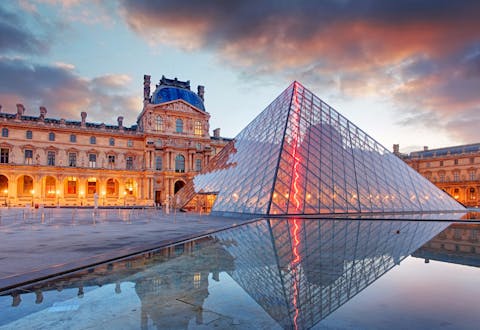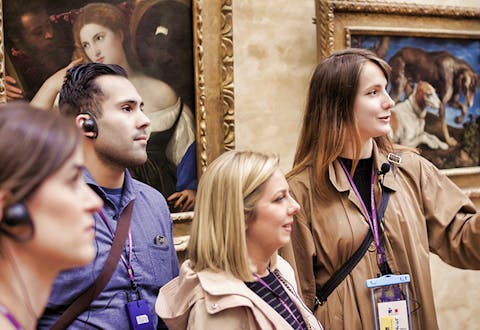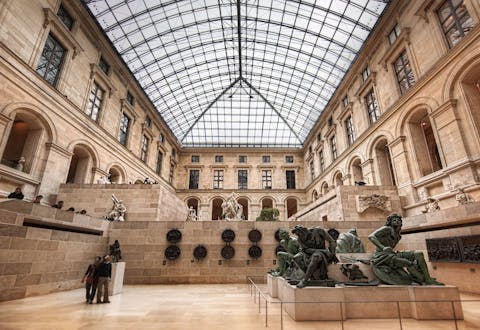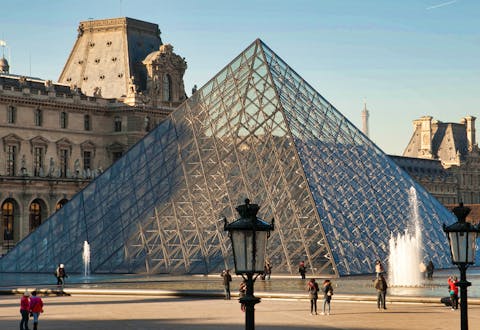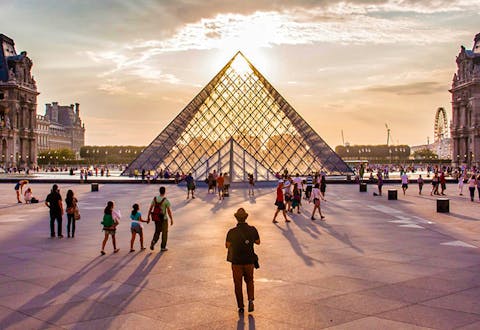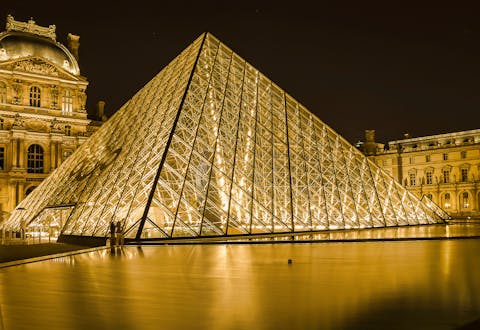A selfie with ‘Mona Lisa’ has become customary at the Louvre! Synonymous with the world’s biggest art museum, the Mona Lisa grabs disproportionate attention out of more than 35,000 artworks that call Louvre home. Unless you are an art connoisseur, you can find yourself feeling lost in the endless display of art through the ages. I wouldn't blame you, because the Louvre is spread across three wings, four floors, and over eight curatorial departments. That can make even the best museum lover weak in the knees ( quite literally) !
If you are a novice to the world of museums or just feeling overwhelmed at the thought of covering Louvre in a limited time, we have put together a guide for you. It includes details of exemplary masterpieces that deserve an eye and applaud. Crush your Louvre visit in a day and make it a day to remember.
Scroll right to the bottom and get some great first hand tips and insider information on rooms that you CAN maybe skip and not loose out on much!
What not to miss at the Louvre?
The Venus de Milo
Sully Wing, Ground Floor, Room 346
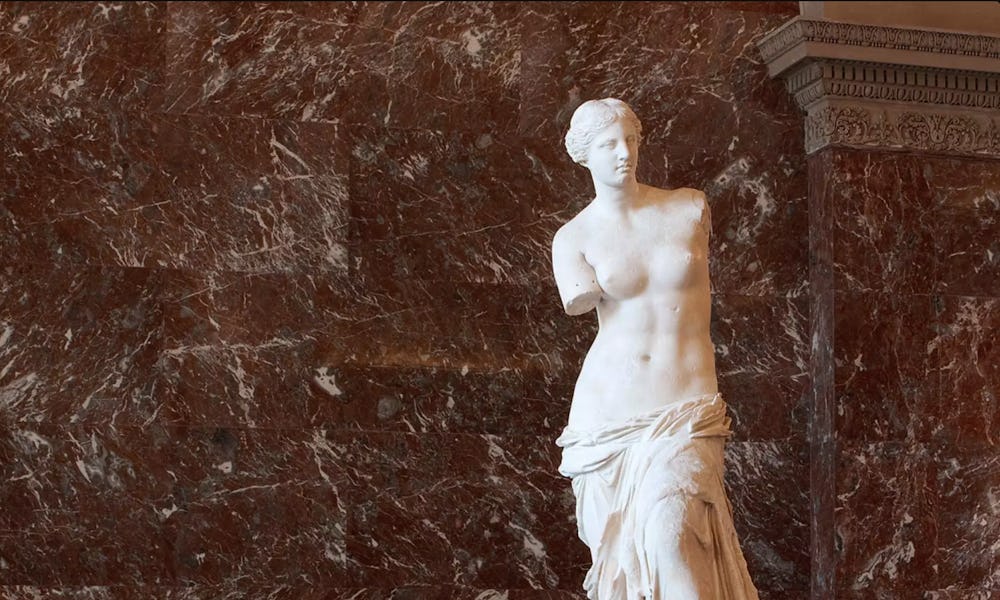
The statue of the Venus de Milo found on the island of Melos in Greece is shrouded in mystery. The world yet does not know of who the sensual and detailed depiction is of – Aphrodite or Amphitrite? Yet she continues to mesmerize visitors who admire the classical work belonging to the Hellenistic Period.
The Winged Victory of Samothrace
Denon Wing, Ground Floor, Victory of Samothrace Staircase, Room 703

The Goddess of Victory, Nike, is depicted in this stunning marble sculpture ‘The Winged Victory of Samothrace’. Look out for the details on the drapery and awe-inspiring wings that seem to breathe life into the sculpture. The theatrical stance as the woman is bracing the wind and water is a sight to behold.
The Raft of the Medusa
Denon Wing, First Floor, Room 700
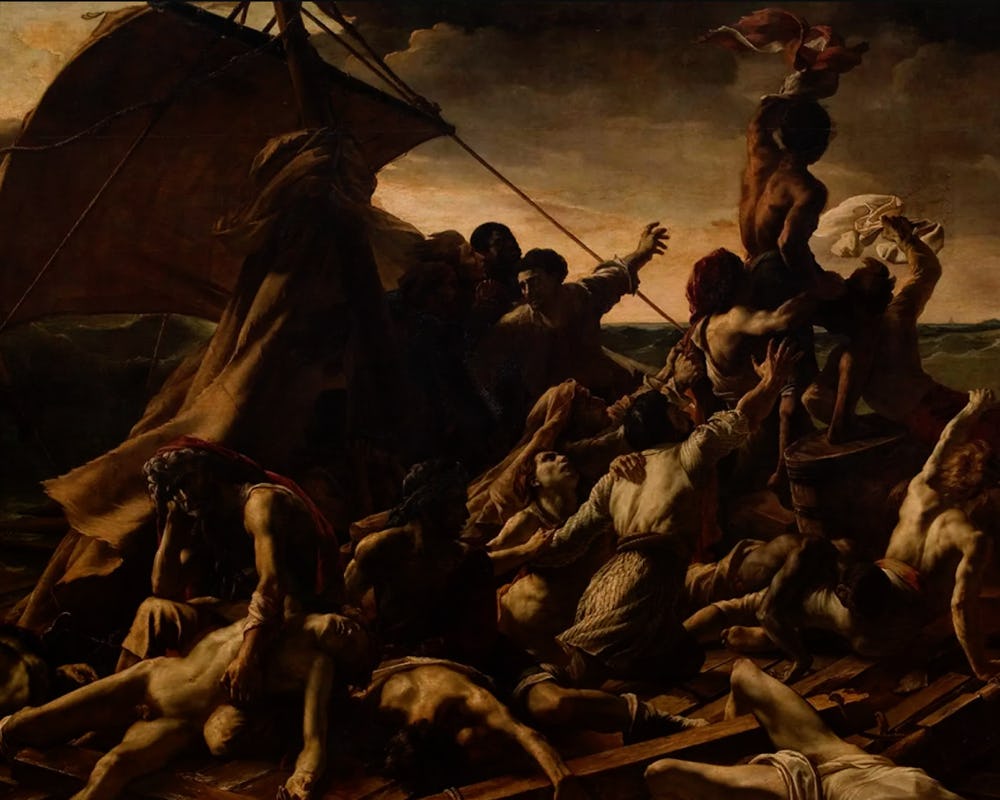
The painting by Géricault is highly regarded as an icon of Romanticism, and is based on the tragedy of the shipwreck of a French frigate ‘Medusa’. It is known for its realistic portrayal of the plight of the forlorn sailors who were at sea, still hoping for a rescue.
Psyche Revived by Cupid’s Kiss
Denon Wing, Ground Floor, Room 400
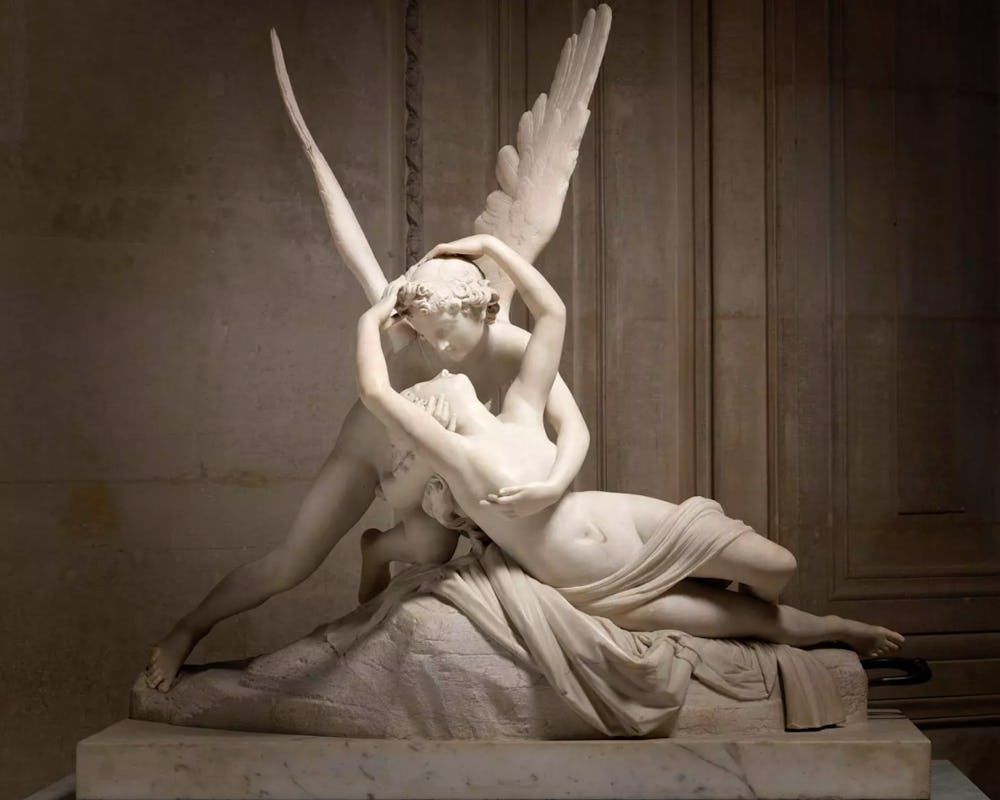
The statues of Cupid and Psyche in embrace hark back to the legend of ‘Metamorphoses’ when Cupid’s mother Venus played truant in their love story. The languid movement of Psyche looking towards her lover is beautifully captured in the unblemished marble. The complex composition is worked on thoroughly and can be admired from all points of view.
Liberty Leading the People
Denon Wing, First Floor, Room 700
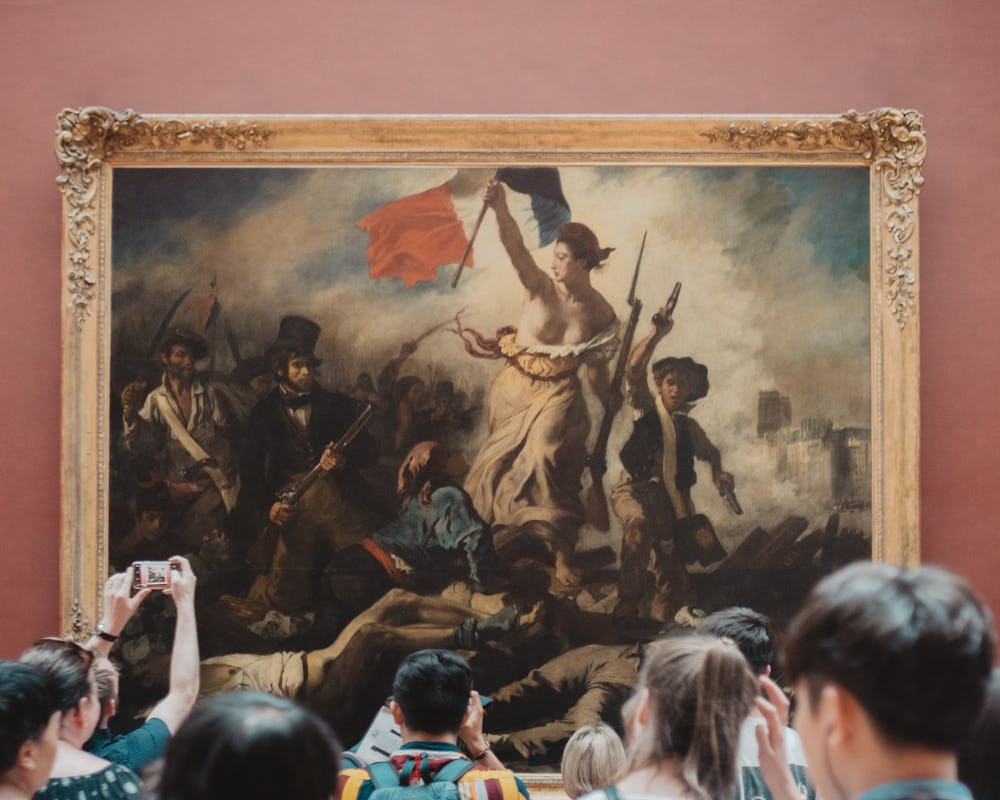
Liberty Leading the People has become the emblem of the July Revolution of 1830. The oil painting depicts the working and middle-class revolting, running over corpses – of people and monarchy – to herald the revolution and unfurling the Tricolor flag. The painting style was considered innovative and realistic, a harbinger of times to come.
Planning a visit to Louvre Paris? Here are deals you cannot resist!
The Coronation of the Emperor Napoleon I and the Crowning of the Empress Joséphine
Denon Wing, First Floor, Room 702
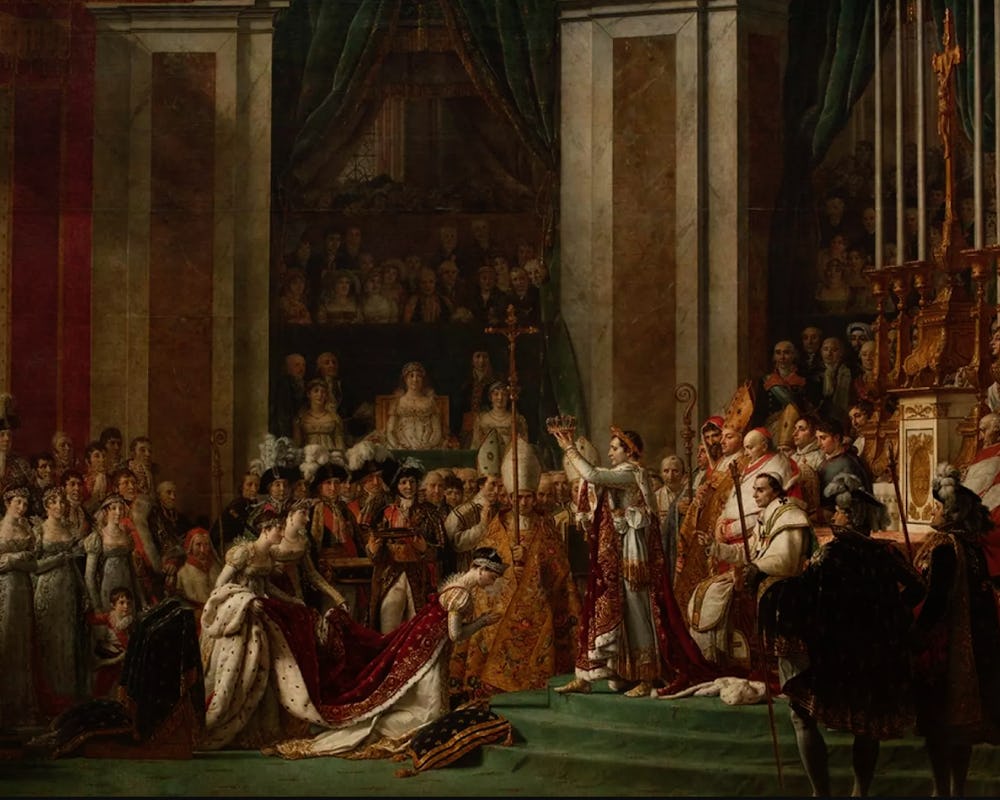
The painting of the coronation of Napoleon is as momentous as the event itself. It was painted by David who was present at the coronation and was directed by Napoleon himself. The realistic painting is huge and like Napoleon himself said, ‘What relief, what truthfulness! This is not a painting; one walks in this picture’.
Sleeping Hermaphroditos
Sully Wing, Ground Floor, Room 348
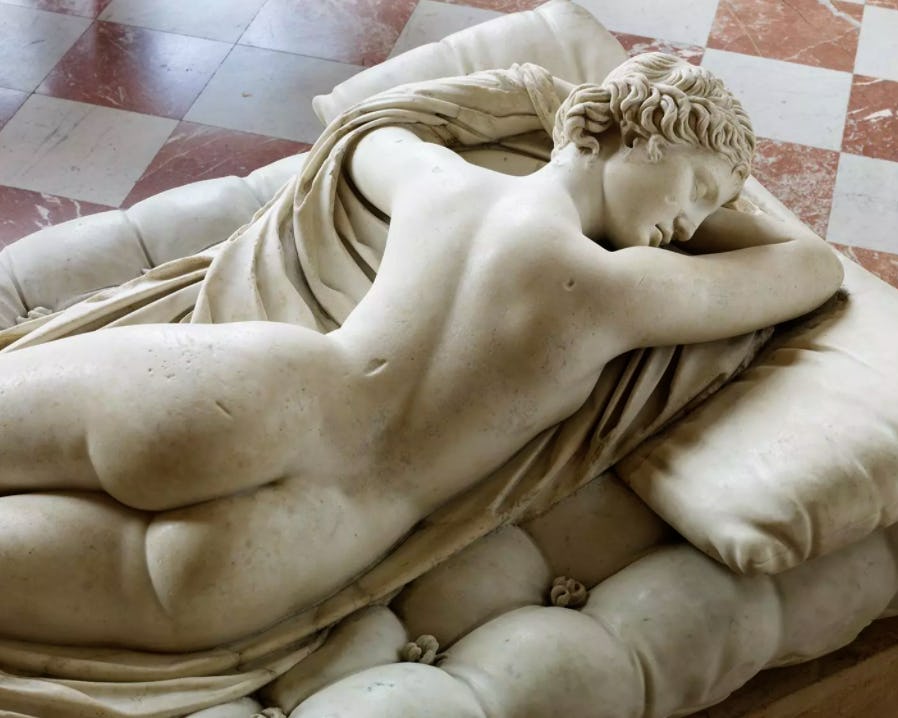
The legend of the Sleeping Hermaphroditos is one of unrequited love, where the nymph Salmacis unable to woo Hermaphroditos urges Zeus to merge them as one. The sculpture has to be viewed from the front and the back. The sinuous form of a woman sleeping on a mattress takes a complete turn at the back with a representation of a bi-sexed figure.
Law Code of Hammurabi
Richelieu Wing, Ground Floor, Room 227
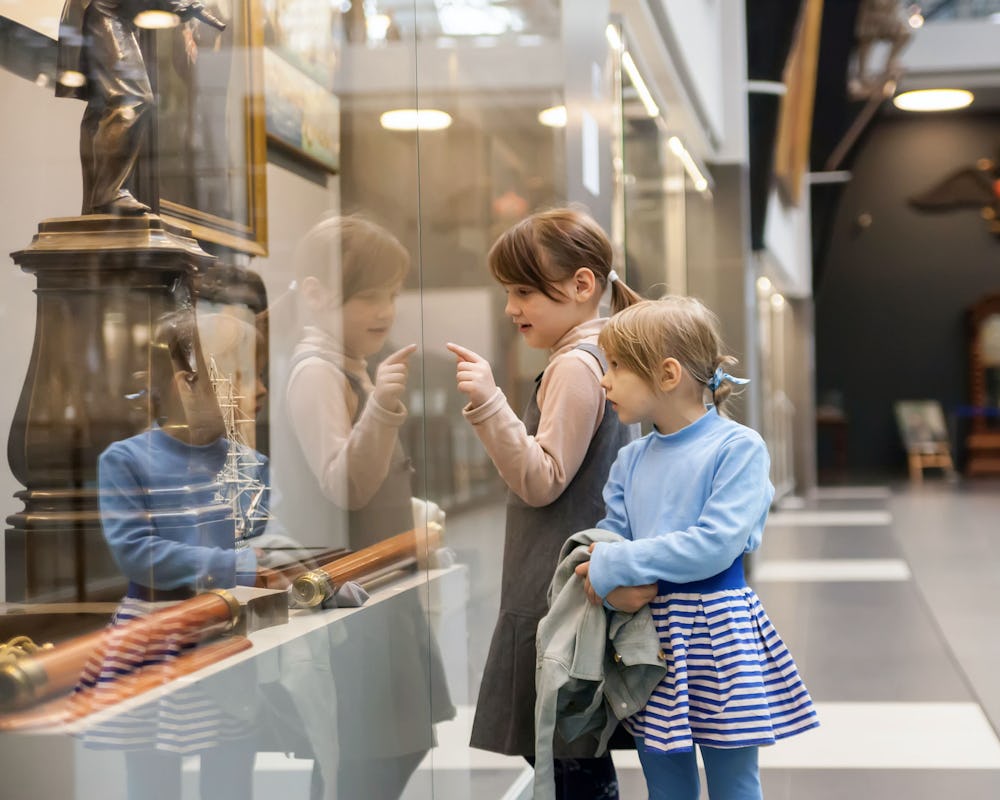
The Code of Hammurabi is a basalt slab engraved with inscriptions in the cuneiform script and the Akkadian language. It is one of the world’s first code of laws full of legal precedents and the collective wisdom of the king ready to be passed on to future generations.
The Dying Slave and Rebellious Slave
Denon Wing, Ground Floor, Room 403
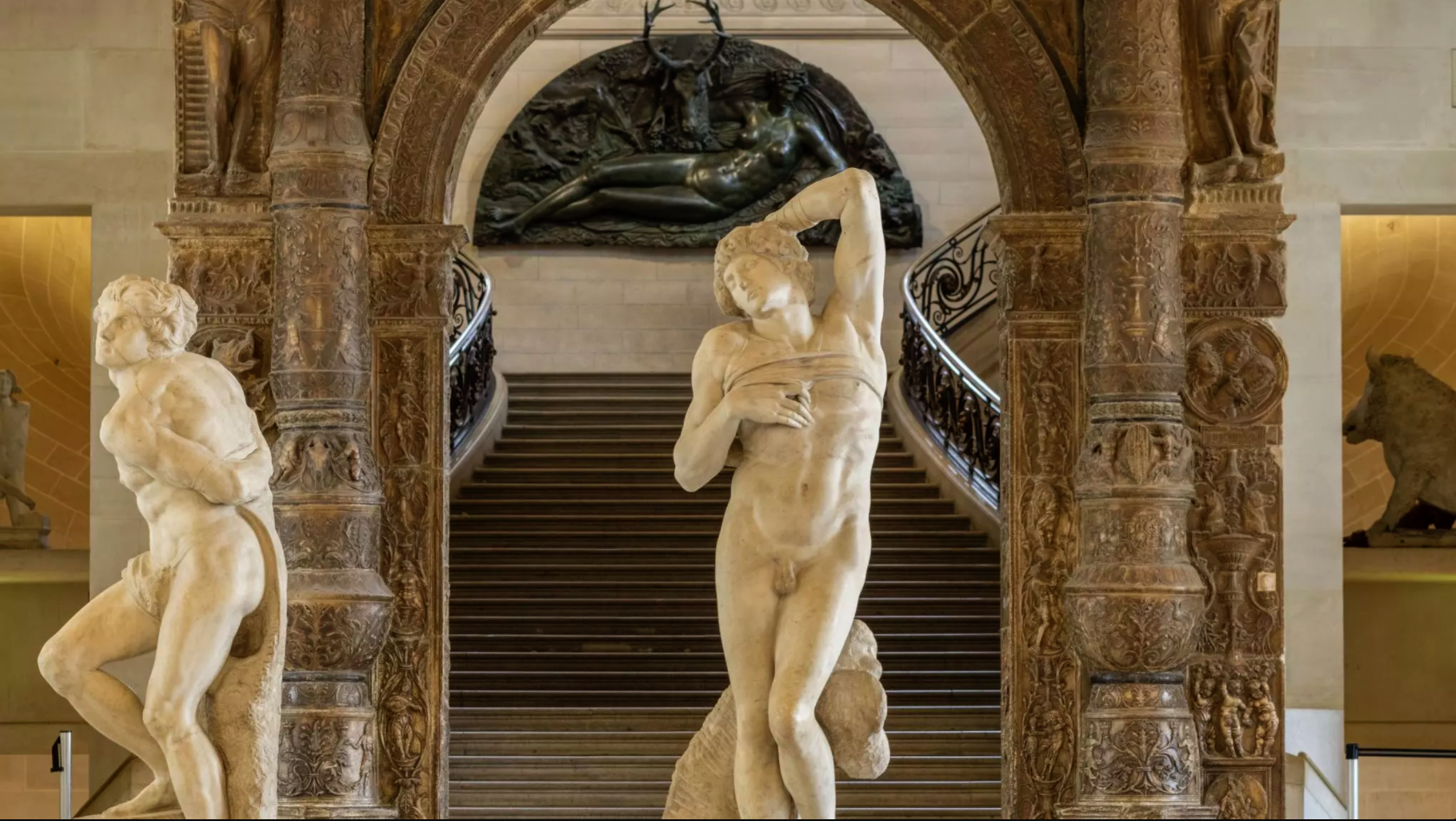
The set of two slaves are marble sculptures that were originally intended to be produced for the tomb of Pope Julius II. Unfortunately, it never materialized due to financial reasons and while the Dying Slave was completed, the Rebellious Slave was hurriedly abandoned. The contrast in the artistry of both is worth noting to understand Michelangelo’s ideal process.
Crown of Louis XV
Denon Wing, First Floor, Room 705
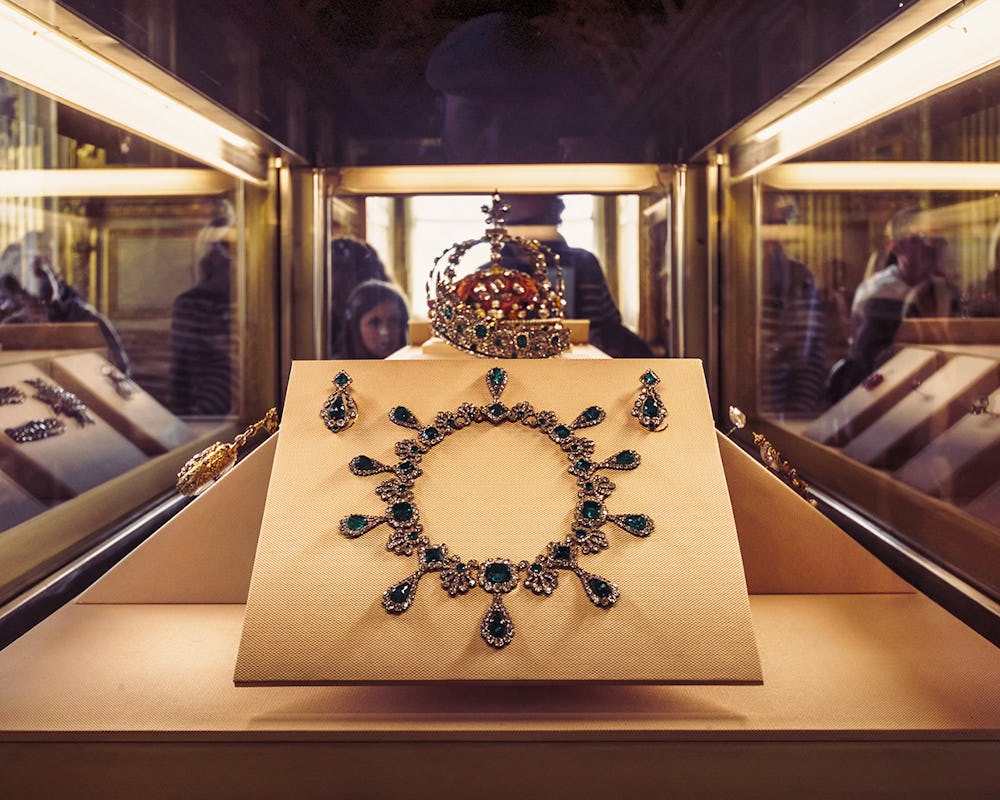
The Crown of Louis XV is a magnificent piece of French Royal jewelry. It was a tradition of French Kings to have their personal crowns made for their coronation and Louis XV commissioned two of them. The one is Louvre is made of Gilded silver and includes motifs of the fleur-de-lis the symbol of France.
Looking for tickets to Louvre Paris? These popular guided tours are the deal.
Winged human-headed bull
Richelieu wing, Ground Floor, Room 229
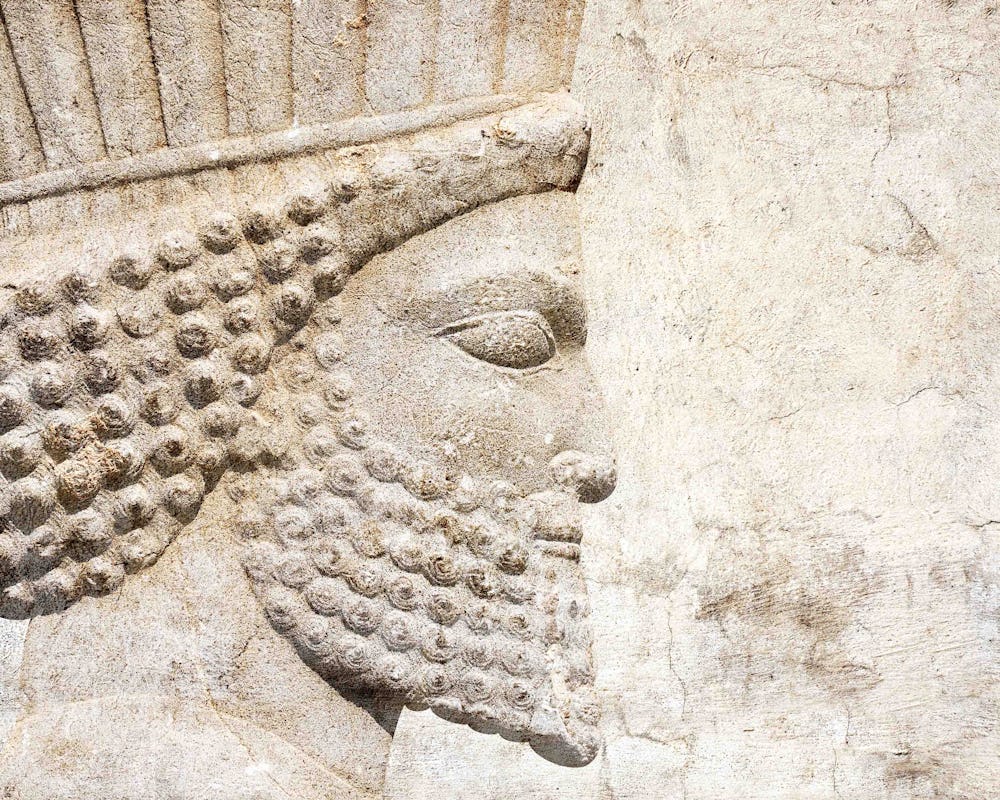
The gates of Assyrian Palaces back in 713 BC were flanked by these imposing relief sculptures known as the Shedu or Lamassu. The sculpture in the Louvre is made from a single block of stone and is known for its detailing of the creature that is a mix of a human, bull, and bird.
The Four Seasons
Sully Wing, First Floor, Room 605
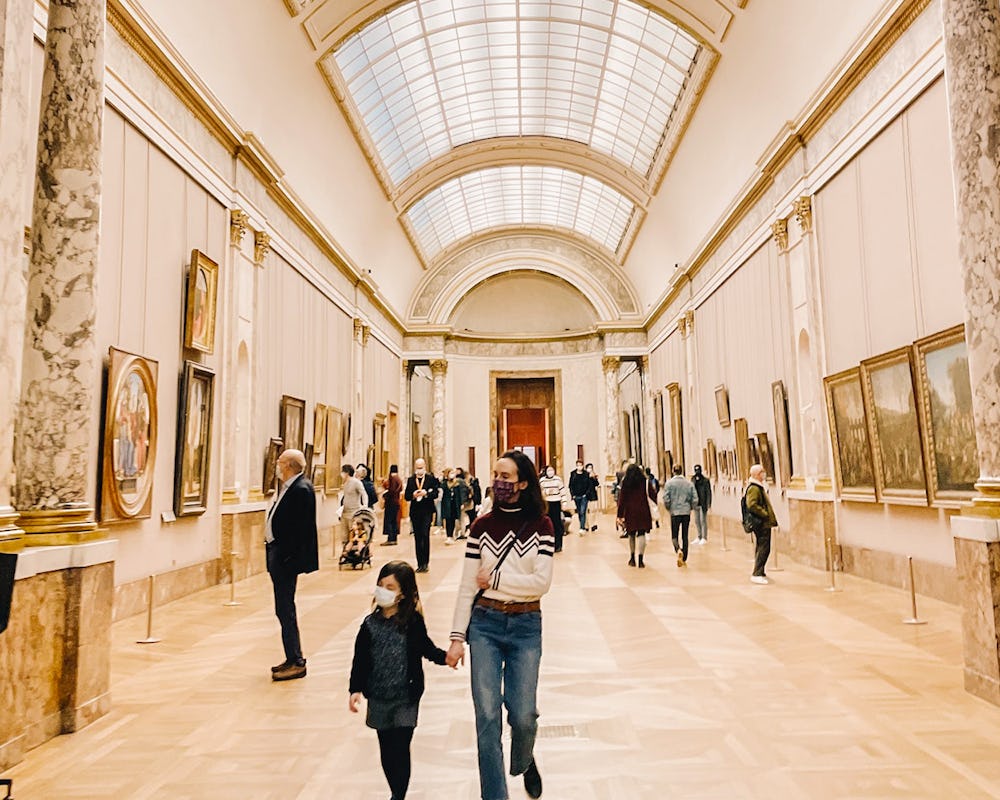
The Four Seasons are depicted in these delicate faience busts, which are essentially tin-glazed pottery. The large busts represent the seasons in the form of ancient Gods – Spring as Flora, Summer as Ceres, and Autumn as Bacchus – while is in the form of an old man. The colors and fine details of this 18th Century are commendable work.
Napoleon III Apartments
Richelieu Wing, First Floor, Room 547
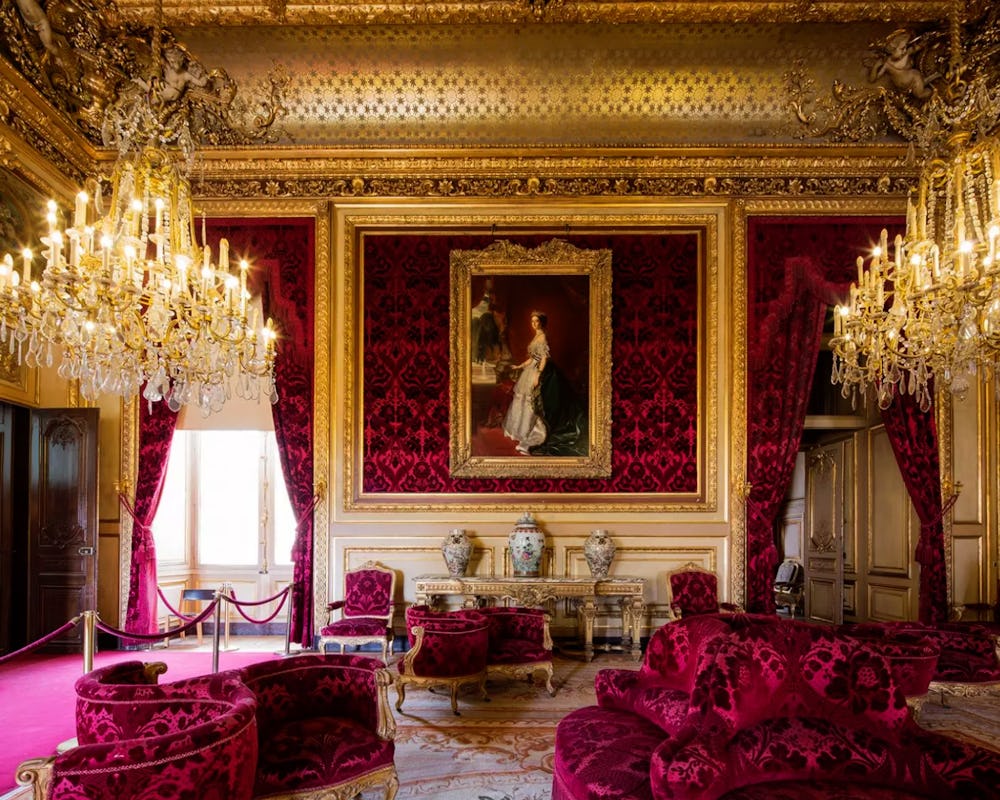
The building of the Louvre was used for multiple purposes throughout history and in the 18th century, it was renovated to accommodate Napoleon III apartments. The rooms are well-preserved and an excellent example of decorative arts of the period. The sheer opulence and grandeur of the objects are captivating.
The Wedding Feast at Cana
Denon Wing, First Floor, Room 711
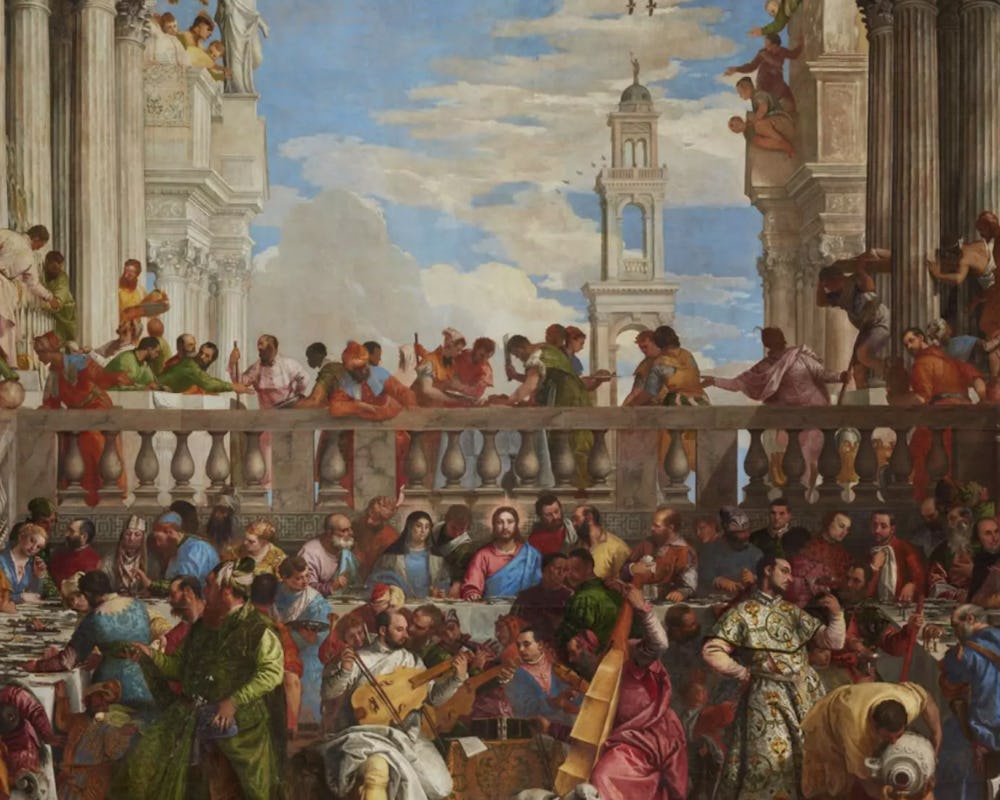
The Wedding Feast at Cana by Veronese is an epic depicting the moment when Jesus turned water to wine. The painting originally commissioned by the San Giorgio Monastery in Venice is heralded for its grand proportions and the artistic composition with realistic details and bright colors.
The Rape of the Sabine Women
Richelieu Wing, Second Floor, Room 828
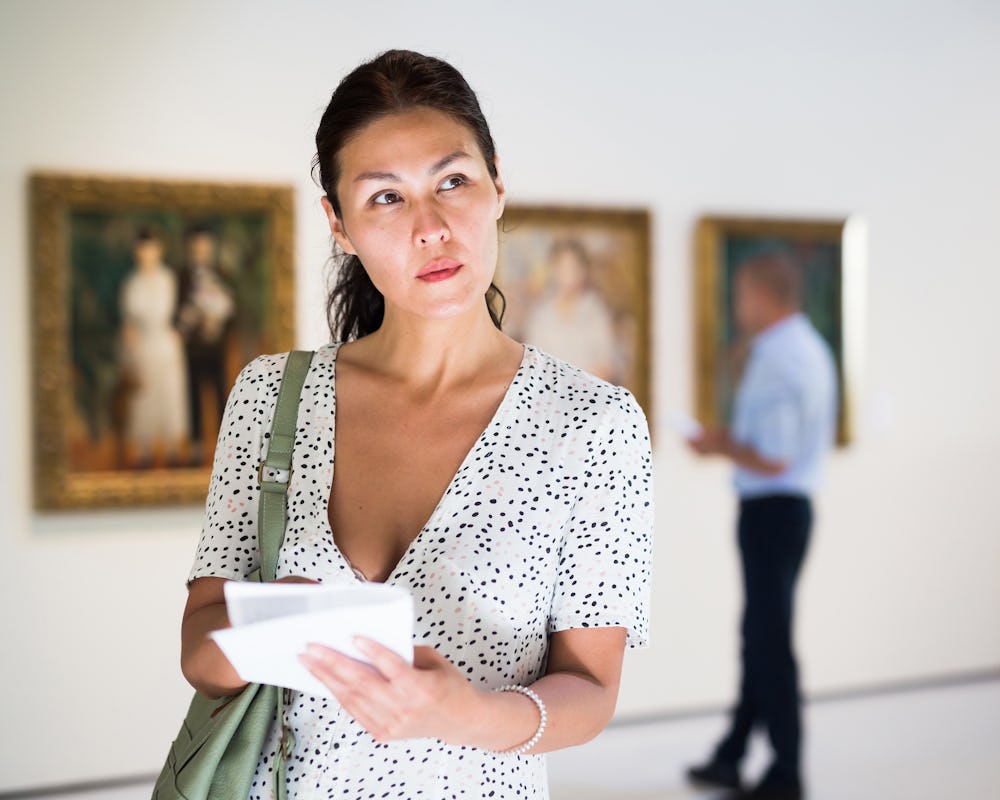
Poussin illustrated an ancient Roman myth in this painting ‘The Rape of the Sabine Women’. The story goes that Roman men abducted the women of Sabine to build a city and ensure offspring. The painting depicts the commotion and the fearful women with three-dimensional effects and sense of movement.
Louvre Paris Tickets
Grab Louvre tickets online and save a few euros! You can't get these deals anywhere else.
Louvre Paris floor plan
To put all these wings and rooms into perspective, here's a quick floor plan of the Louvre. You can find a detailed one here. Make sure to download this and keep it handy on your phone. Alternatively, you can pick up a free copy from the museum.
Rooms you cannot skip at the Louvre Paris
- Room 705 – Denon Wing, First Floor - Apollo Gallery – It is the best hall in Louvre and contains the Crown Jewels. The hall is opulent and rich in paintings, tapestries, statues, and gilded embellishments. The high vaulted ceiling and the frescoes make every aspect of the hall a spectacular visual.
- Room 133 – Sully Wing, Minus One Floor – The Pavilion de l’Horloge – The history of Louvre starts from the time when it was a medieval castle, which later transformed to a Royal Palace and eventually a museum. This room still retains the underground stone moat that was the foundation of the ancient fortress.
- Room 324 – Sully Wing, Ground Floor – The Temple – This room contains the colossal statue of the Ramses II which is almost three meters in height. The entire wing from Room 317 to Room 338 is an extraordinary journey through Ancient Egypt and includes sarcophagi, sculptures, and documents.
Rooms you can skip at the Louvre Paris
The artwork at Louvre is invaluable and every object is worth admiration. However, a lot of the artwork is subject to the eye of the beholder and some of the rooms can get monotonous especially as you won’t have the time to know the story behind the artwork and its specialty.
- Room 130 – Sully Wing, Minus One Floor – Cabinet of Prints and Drawings – This room contains a collection of drawings, miniatures, manuscripts, books, copperplates, and lithographs that can be exciting only to the experts or those with a specific interest in these art forms.
- Room 800 – Richelieu Wing, Second Floor – Paintings – The entire set of rooms on the second floor, including the Sully Wing are full of paintings from Northern Europe. There are hundreds of paintings which can become repetitive and its best to make a note of the masterpieces you wish to see, instead of stopping at all of the paintings.
Tips to explore the Louvre in one day
- Time is of the essence and the best way to maximise it is by buying Skip the Line tickets in advance to your visit. This will save you at least 1-2 hours depending on which day you have chosen to visit.
- There are five entrances to the Louvre and if you are buying Skip the Line tickets or guided tours you will have access to special entrances. Else, you have to take the main entrance near the pyramid! But, if you are exploring on your own the best entrance is at Galerie du Carrousel, which has direct access from the metro station Palais Royal Musee du Louvre on Line 1. You can save a lot of time getting in quickly.
- Louvre is open later in the night on Wednesdays and Fridays until 9:45 PM, and you can benefit from the long working hours. A great way to make the most of it is by choosing to go on a guided night tour where you can enjoy the benefit of lesser crowds and expert guidance.
- Don’t plan to get in and out of the museum for food; you will only end up wasting time. You can pack small snacks along with you inside the museum; however, there are at least 15 restaurants, cafes and snack bars inside the museum where you can buy affordable food and drinks.
- The best way to not miss what you like is to arm yourself with the knowledge of what’s in the Louvre. Get a sense of the museum with this map here and plan beforehand the things you want to see. The Louvre app is also a great way to navigate the museum, just don’t waste time on it on the day of the visit!
- You will spend the maximum time finding your way through crowds near the Mona Lisa. Head straight to her first thing in the morning or last thing before closing time, anytime in between and you will spend 15-20 minutes fighting for space.
- A guided tour is the best way to save time and yet cover all the masterpieces. However, if you are on a budget then you can use the Visitor trails created by the museum to help you navigate the museum yourself. There are interesting trails like ‘JAY-Z and Beyonce at the Louvre’; ‘Will.I.Am at the Louvre’, and ‘Masterpieces’ that cover important highlights within 90 minutes.


